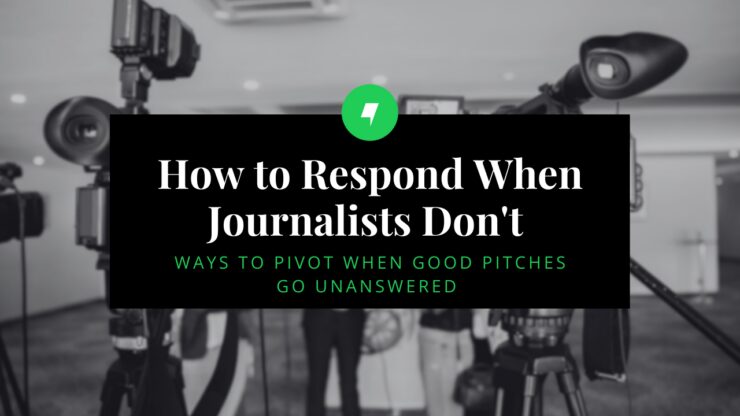We’ve all been there. You craft what feels like the perfect pitch—clear, concise, and tailored to the journalist’s beat—and then… crickets. The reality is that even the best pitches can get lost in the shuffle of a journalist’s inbox. With hundreds of emails vying for their attention every day, it’s no surprise that some stories don’t land on the first try.
But silence doesn’t mean failure. It’s an opportunity to pivot, refine your approach, and build stronger relationships with the media. Let’s break down how to respond when your pitch goes unanswered.
What Makes a Pitch Stand Out?
Before diving into response strategies, it is important to understand what makes a pitch reporter-friendly in the first place.
- An attention-grabbing subject line that summarizes your news in one compelling sentence
- A strong hook that immediately communicates why your story matters and how it’s relevant to their audience
- Beat alignment showing you’ve done your homework by tailoring your pitch to what the reporter covers
- Available spokespeople ready for immediate comment or interview
- Localized angles demonstrating relevance to the reporter’s specific audience
Even with these elements in place, inbox overload means great pitches sometimes fall through the cracks. Here’s what to do when you don’t hear back.
When you Don’t Hear Back: 5 Strategies
-
Craft a Thoughtful Follow-Up
Wait a day or two (if the news is not breaking), then send a concise follow-up that adds value rather than just asking “Did you see my email?” Include a new angle, recent data point, or timely connection that wasn’t in your original pitch.
-
Pick Up the Phone
In our digital age, a brief, phone call can differentiate you from the crowd. Be prepared with your talking points, respect their time, and be ready to email additional information immediately if they express interest.
-
Try a Different Reporter
If your targeted journalist isn’t responsive after a couple attempts, consider approaching another reporter at the same outlet who covers related topics. No need to mention the non-responsive colleague – simply tailor your pitch to the new contact’s beat.
-
Save It for a More Relevant Time
Sometimes timing, not content, is the issue. File your pitch for a more appropriate news cycle, perhaps tied to an upcoming industry event, holiday, or relevant awareness month.
-
Self-Publish Your News
Transform your pitch into a compelling blog post or LinkedIn article. This gives your news a home and creates shareable content that might eventually catch media attention.
Persistence Pays Off
Ultimately, media relations is about building relationships, not just securing immediate coverage. Each interaction, even those without response, helps refine your approach. The most successful PR professionals understand that persistence – balanced with respect for journalists’ time – ultimately leads to meaningful partnerships.
Posted In Media Relations, Public Relations
 Emily Kanter
Emily Kanter 